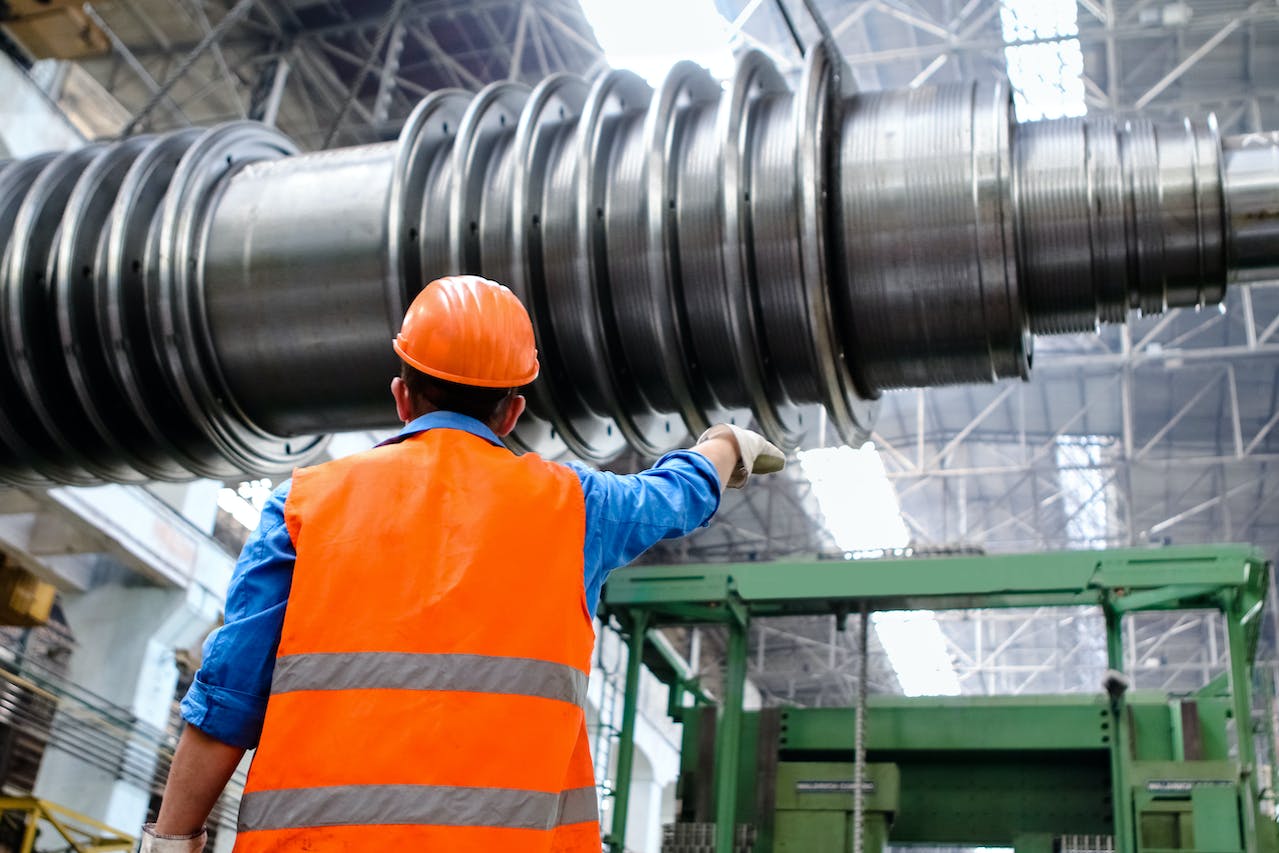Imagine you’re in a bustling coffee shop, watching as the barista prepares a large batch of coffee.

The process starts with measuring out a specific amount of coffee beans, then grinding them to the perfect consistency.
Next, the ground beans are combined with water in a large brewer. The brewing takes a specific amount of time, allowing the hot water to extract the flavors and aromas from the grounds.
Once the brewing is complete, the coffee is filtered and collected in a large pot, ready to be served to the waiting customers.
This entire process is conducted in a single batch, with each step dependent on the completion of the previous one to ensure quality and consistency.
This coffee brewing scenario is analogous to batch process manufacturing in the industrial world.
In batch process manufacturing, raw materials are transformed into finished products through a series of controlled steps, much like the coffee grounds undergoing grinding, brewing, and filtering.
Each batch starts with a defined quantity of raw materials and proceeds through predetermined stages of production. The sequence and conditions at each stage are carefully controlled to achieve a consistent and high-quality output, similar to how the barista monitors each step to ensure the best coffee flavor.
Batch process manufacturing, therefore, is similar to brewing coffee in that both processes handle materials in batches and follow a set sequence of operations to transform raw inputs into a finished product.
The main difference lies in the scale and complexity of the operations, with industrial batch processes handling a wider variety of materials and more complex transformations.
Defining Batch Process Manufacturing
Batch process manufacturing is a specific type of production strategy where materials are processed in designated quantities, or batches, to achieve a desired chemical or physical change.
These batches typically reside in large tanks, vats, or reactors, where they undergo controlled reactions, mixing, heating, or other treatments.
Unlike continuous production, which operates nonstop, batch processes involve distinct cycles with clear starting and ending points for each batch.
This approach is particularly well-suited for industries dealing with complex chemical reactions, such as:
- Chemical manufacturing: Production of pharmaceuticals, plastics, and fertilizers.
- Food and beverage production: Brewing beer, distilling spirits, and processing dairy products.
- Pharmaceutical production: Manufacturing vaccines, antibiotics, and other medications.
- Petroleum refining: Transforming crude oil into gasoline, diesel, and other fuels.
Now that we have a clear understanding of batch process manufacturing, let’s explore how it compares to other manufacturing methods and delve deeper into the world of batch production as a whole.
Batch Process Manufacturing vs Batch Production
The terms “batch production” and “batch process manufacturing” are often used interchangeably. However, a subtle distinction exists:

- Batch production emphasizes the creation of discrete units (products) in batches. Think of it as assembling a group of bicycles or baking a set of cookies.
- Batch process manufacturing focuses on transforming materials through chemical or physical reactions in batches. Examples include brewing beer or refining oil.
While both involve processing in batches, batch production deals with physical assembly, whereas batch process manufacturing involves material transformation.
Batch Process Manufacturing vs. Continuous Process Manufacturing
Batch process manufacturing and continuous process manufacturing are two distinct approaches, although they share some similarities:
- Both utilize batches: Materials are processed in defined quantities, but the key difference lies in the flow of materials.
- Batch processing operates in cycles. Each batch undergoes a series of transformations, then the equipment is cleaned and prepared for the next batch. This results in downtime between batches.
- Continuous processing, on the other hand, operates nonstop. Raw materials are continuously fed into the system at one end, and finished products emerge from the other end. This method offers higher production volumes and efficiency.
Choosing between batch and continuous processing depends on several factors, including:
- Product complexity: Batch processing is well-suited for complex products requiring intricate chemical reactions or specific processing conditions.
- Production volume: Continuous processing is ideal for high-volume production of standardized products.
- Setup time: If cleaning and reconfiguring equipment for each batch is time-consuming, continuous processing might be less efficient.
In conclusion, both batch process manufacturing and batch production involve processing in batches, but they cater to different needs. Batch process manufacturing tackles material transformation, while batch production focuses on assembling discrete units. Understanding these distinctions and their comparison to continuous processing empowers manufacturers to select the most suitable approach for their specific requirements.
Understanding the Manufacturing Spectrum
To fully grasp batch production, it’s helpful to compare it with other manufacturing processes:
- Continuous process manufacturing: This method involves uninterrupted production, with raw materials constantly flowing in, and finished products continuously emerging. Examples include oil refineries and glass production.
- Batch production: Here, production occurs in distinct batches, with intermittent pauses between them for setup or quality checks. This method offers flexibility for product variations within the batch.
- Discrete manufacturing: This approach focuses on creating distinct, individual units, often customized to specifications. Furniture making and aircraft assembly are examples.
- Job shop manufacturing: This method caters to unique customer orders, often involving one-of-a-kind products or small production runs. A machine shop creating custom gears would fall under this category.
Batch Production Monitoring: A Comparative View
Monitoring production efficiency is crucial in all manufacturing processes. Here’s how batch production monitoring differs from the others:
- Discrete manufacturing: Monitoring focuses on tracking individual units through the production line, ensuring quality and adherence to specifications.
- Continuous process manufacturing: Real-time monitoring of variables like pressure, temperature, and flow rate is vital to maintain consistent output and product quality.
- Job shop manufacturing: Close attention is paid to each job’s progress, with detailed documentation to ensure adherence to customer specifications and timelines.
- Batch production: Monitoring involves tracking the entire batch’s progress through various stages. Statistical process control techniques are often employed to identify and address quality issues within the batch.
Benefits of Batch Production
- Flexibility: Batch production allows for easier product variations within the batch compared to mass production. This caters to a wider range of customer needs.
- Reduced setup costs: By consolidating production into batches, setup costs are spread across a larger quantity of units, leading to cost savings.
- Efficient use of resources: Batching allows for optimized use of machinery and labor, minimizing downtime between production runs.
- Improved quality control: Batch production facilitates quality checks at various stages, allowing for early detection and correction of defects within the batch.
Challenges of Batch Production
- Inventory management: Maintaining adequate raw materials for upcoming batches and storing finished goods can be challenging.
- Lead times: Production lead times can be longer compared to continuous production due to batch processing cycles.
- Forecasting demand: Accurate demand forecasting is critical to avoid overproduction or stockouts.
- Scheduling complexity: Coordinating production schedules for different batches with varying requirements can be a challenge.
Software & Batch Process Manufacturing
As a software company, we would be remised if we never mentioned the role software can play in manufacturing processes such as batch process manufacturing.
I have already written about types of manufacturing software and how different types of software can help in various aspects of manufacturing.
For this article, I’ll focus specifically on how software can help/enhance batch process manufacturing. Batch process manufacturing offers unique challenges that other types of manufacturing might not. Below are a few ways in which software can make a difference in batch process manufacturing.
Recipe Management and Execution
Batch processes often depend on precise formulations or recipes.
Software in batch process manufacturing can manage these recipes, ensuring that each batch adheres to specified ingredient quantities and processing conditions. This is crucial for maintaining product consistency and quality.
The software also allows for quick adjustments to recipes based on new requirements or in response to raw material variations, which is less prevalent in continuous manufacturing processes.
SIDE NOTE: MontBlancAI software allows you to easily create and manage recipes. Here we call them programs.
Batch Scheduling and Sequencing
In batch production, the order in which batches are processed can significantly affect overall efficiency and product quality.
Batch process software provides tools for optimized scheduling and sequencing, taking into account the cleaning times, setup times, and changeover times required between different batches. This helps in reducing downtime and cross-contamination, issues that are particularly critical in industries like pharmaceuticals and chemicals.
SIDE NOTE: With MontBlancAI, you can easily check not only your batches cycles, but also your cleaning cycles. Then, you can easily overlay both production and/or cip (clean-in-place) batches for a given period of time, so you can visually compare them to see if there were any batches that were abnormal.
Process Parameter Control
Batch manufacturers often deal with sensitive process parameters that can vary slightly between batches.
Software can help by providing precise control and monitoring of these parameters (temperature, pressure, pH levels, etc.). Real-time monitoring allows operators to make immediate adjustments to ensure each batch meets the desired specifications.
Material Traceability and Lot Control
Batch process manufacturing software excels in detailed traceability, tracking each component from raw materials through to finished products. This is essential for quality control, recall management, and meeting regulatory requirements. Software can automatically log every detail of the batch process, including which materials were used, their lot numbers, and the equipment and personnel involved.
SIDE NOTE: MontBlancAI makes batch traceability easy.
Quality Assurance and Compliance
Ensuring compliance with industry regulations and standards is particularly challenging in batch manufacturing due to the variability between batches. Software can automate the generation of compliance reports and maintain records of quality checks and deviations. This feature supports adherence to Good Manufacturing Practices (GMP) and other regulatory standards, making audits and inspections more straightforward.
Integration with Quality Control Systems
Unlike general manufacturing software, batch processing software often includes or integrates tightly with quality control systems that perform statistical process control. This integration helps in identifying trends that could lead to deviations in product quality before they become issues, allowing for preemptive action.
Conclusion
Batch production offers a valuable manufacturing strategy for companies seeking a balance between cost-effectiveness and flexibility. Understanding its core principles, strengths, and weaknesses allows manufacturers to determine if this approach aligns with their production needs. Whether it’s crafting delicious cookies or constructing complex machinery, batch production continues to be an essential pillar of the manufacturing landscape.



